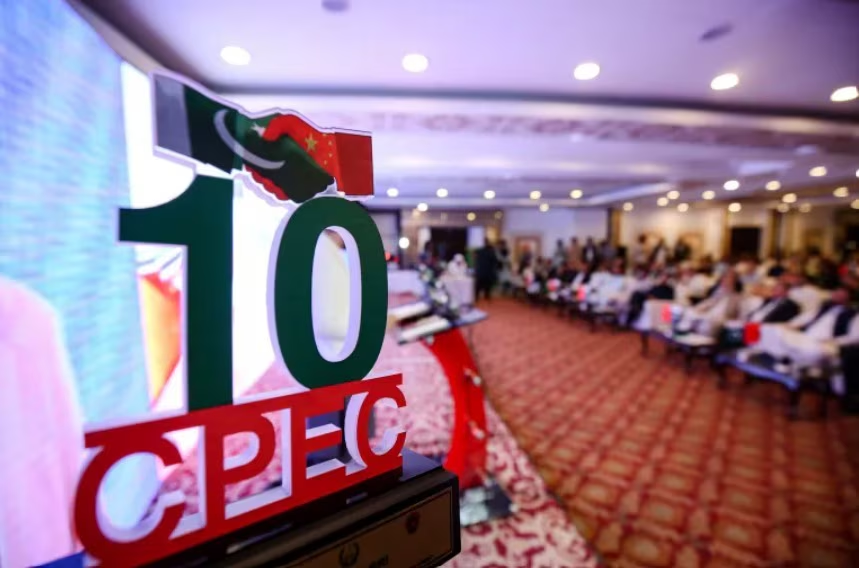
The China-Pakistan Economic Corridor (CPEC) is the flagship project of China’s Belt and Road Initiative. The project provides multiple benefits not just to China and Pakistan but to the whole region. However, the project faces multiple hindrances due to the opposition of different regional and extra-regional state and non-state actors. Different terrorist organizations have targeted Chinese engineers working on the CPEC multiple times, allegedly, at the behest of rival states. Nonetheless, China and Pakistan have decided to commence phase 2 of the project despite all the obstacles.
Pakistani Prime Minister Shehbaz Sharif visited China from the 4th to the 8th of June at the invitation of Xi Jinping, the Chinese President, and Chinese Prime Minister Li Qiang. The rationale behind this meeting between the leadership of the two countries was to discuss details about the expansion and upgradation of the connection between different fields. The Pakistani Premier addressed the Pakistan-China Business Forum at Shenzhen along with meeting executives of different Chinese firms in IT, fuel, and energy sectors. Discussions were conducted between the officials from both sides to bolster their strategic partnership, increase investment and trade, upgrade the CPEC, strengthen cooperation in energy, defense and security, science and technology, space, and education, enhance people-to-people contacts, and promote cultural ties between the two sides. These discussions hold the potential to set the future trajectory of Sino-Pakistan relations. Chinese President has already provided novel economic opportunities for Pakistan, helping the latter excel.
Phases of CPEC: A Roadmap for Economic Development
Since the launch of the project, CPEC has been facing numerous challenges. The project consists of three phases. The first and the short-term phase (2015-2022), the second phase is known as the medium-term phase and ranges from 2021-2025 while the third phase is the long-term phase (2026-2030). The CPEC was inaugurated in April 2015, when the two countries signed 51 Memorandums of Understanding (MoU) and agreements with a total cost of $46 billion. The 2nd phase of the corridor is aligned to its objectives. Industrialization was accelerated under this phase of the CPEC by setting up Special Economic Zones (SEZs) in all provinces of the country. Allama Iqbal Industrial City (AIIC), under these SEZs, became operational in early 2020 in Faisalabad. Both countries have accentuated their efforts to establish a joint working group on the new economic corridors under this 2nd phase of the project.
Accelerating Progress: Agreements and Frameworks for Phase 2 of CPEC
In the recent meeting between the leadership of the two countries, China and Pakistan have agreed to accelerate the progress on this second phase of the corridor along with establishing a joint working venture on 5 new economic corridors. These economic corridors include the corridor of innovation, green energy, inclusive regional development, and the corridor of job creation. Moreover, the implementation of the 5Es framework, consisting of Energy, Environment, Equity, E-Pakistan, and Export has already been started in Pakistan. All these frameworks align with the five newly formulated economic corridors to further the region’s development in every sector under the visionary leadership of the two sides.
For the implementation of this project, the “One Plus Four” model will be followed according to the announced details, wherein Pakistan’s special economic zone will be connected with one Chinese province. Furthermore, one industry group will develop specialized clusters within these economic zones, a state-owned enterprise will lead the SEZs in Pakistan and one will provide technical assistance from China. The collective framework will accelerate the creation and development of the SEZs, increasing their competitiveness and appeal to the investors. The ability of these SEZs to become a collection of particular industries, creating a diverse and conducive eco-system for innovation and development, and their ability to foster economies of scale will ensure their success. Moreover, the M-8 Motorway and the Gwadar Port will cement trade links along with facilitating regional integration under the CPEC.
Strategic Significance and Implications for Pakistan’s Economic Development
Both sides showed their willingness to make this visit productive and tangible. Pakistani Prime Minister, Shehbaz Sharif, issued numerous directives to different departments and ministries to propose strategies for attracting Chinese investors and assure them about the support of the Pakistani government’s assistance and facilitation. The significance of this visit could be gauged by the fact that it took place when the Pakistani government was about to present its new budgetary policy. Pakistan’s budget session has been delayed due to this visit, which demonstrates that the CPEC phase 2 has a significant link with the country’s budgetary plans. China, the all-weather friend of Pakistan, has been a great source of its external economic inflows. The launch and implementation of the second phase of the corridor hold pivotal significance for Pakistan, as it possesses the potential to help the country overcome its economic issues. Moreover, it can also initiate an industrial boost in the country. However, Pakistan will have to overcome its internal political polarization. Terrorism is another major obstacle in the implementation and launch of this new phase of the CPEC. Pakistan will have to make serious efforts to crush terrorists inside the country. Moreover, it will also need the assistance and cooperation of the Afghan government to curb across-the-border terrorism. This is the only for Pakistan to stay relevant in the regional geopolitics and strengthen its economy.
Abbas Hashemite – is a political observer and research analyst for regional and global geopolitical issues. He is currently working as an independent researcher and journalist, exclusively for “New Eastern Outlook”.
